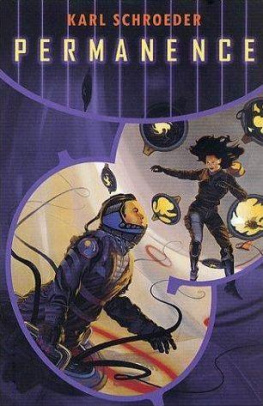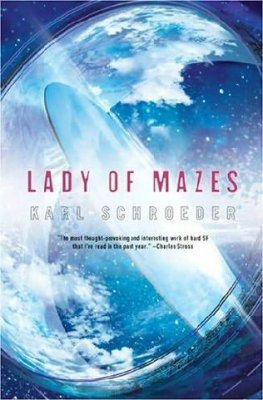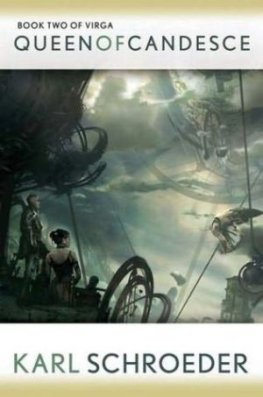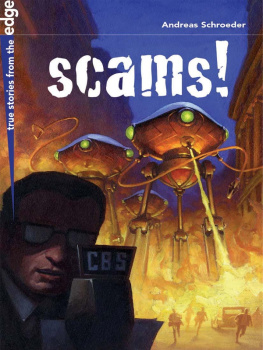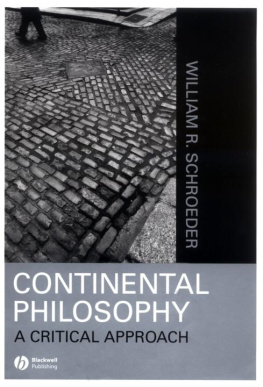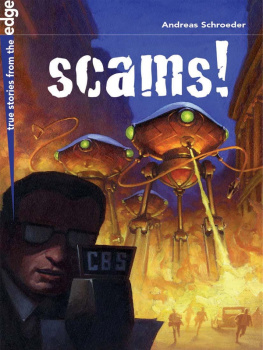Karl Schroeder - Permanence
Here you can read online Karl Schroeder - Permanence full text of the book (entire story) in english for free. Download pdf and epub, get meaning, cover and reviews about this ebook. year: 2002, publisher: Tor Books, genre: Science fiction. Description of the work, (preface) as well as reviews are available. Best literature library LitArk.com created for fans of good reading and offers a wide selection of genres:
Romance novel
Science fiction
Adventure
Detective
Science
History
Home and family
Prose
Art
Politics
Computer
Non-fiction
Religion
Business
Children
Humor
Choose a favorite category and find really read worthwhile books. Enjoy immersion in the world of imagination, feel the emotions of the characters or learn something new for yourself, make an fascinating discovery.
- Book:Permanence
- Author:
- Publisher:Tor Books
- Genre:
- Year:2002
- Rating:4 / 5
- Favourites:Add to favourites
- Your mark:
- 80
- 1
- 2
- 3
- 4
- 5
Permanence: summary, description and annotation
We offer to read an annotation, description, summary or preface (depends on what the author of the book "Permanence" wrote himself). If you haven't found the necessary information about the book — write in the comments, we will try to find it.
Permanence — read online for free the complete book (whole text) full work
Below is the text of the book, divided by pages. System saving the place of the last page read, allows you to conveniently read the book "Permanence" online for free, without having to search again every time where you left off. Put a bookmark, and you can go to the page where you finished reading at any time.
Font size:
Interval:
Bookmark:
Young Rue Cassels of the Cycler Compact- a civilisation based around remote brown dwarf stars is running for her life from her bullying brother, Jentry. Fleeing in a single person spacecraft, she spots a distant, approaching object, and stakes a legal claim to it. It is not the valuable comet she has hoped for, but something even more wonderful, a billion year-old alien starship. Permanence is the story of Rue's quest to visit and claim this ship and its treasures, set against a backdrop of interstellar intrigue and warring empires.

Writing is not really a solitary activity, so thanks are due to many people who helped make this book happen: my editor, David Hartwell; my agent, Donald Maass; Moshe Feder and Rob Stauffer for production help; and as always the clever and relentless critics of Cecil Street. Thanks to the unruly mob at Open Cola for indulging my unusual lunchtime conversations. And especially, thanks to Janice for putting up with the uneven and sometimes bewildering creative process that is novel writing.
It is expedient that there be gods; therefore, let us believe in them.
Ovid
THE DISCOVERY THAT made interstellar travel possible and an interstellar civilization inevitable, was made in 1997; but at the time no one recognized its significance.
Maria Teresa Ruiz, an astronomer at the Universidad de Chile, was searching for white dwarf stars when she spotted something unusual. Thirty light-years away, in the constellation Hydra, a very faint red pinprick of light lay adrift. Its spectrum didn't show titanium oxide, which would have marked it as a red dwarf star. Instead, Ruiz found the unmistakable signature of lithium in its atmosphere an impossibility for any real star. She named the object Kelu-1, the first free-floating brown dwarf ever seen.
The first brown dwarfs, Gliese 229B and Teide 1, had been spotted two years before, within weeks of one another. Too small to be stars, but too large to be planets, such galactic oddities glowed faint red from the heat of their slow gravitational contraction. Young dwarfs were hot enough to sustain Earthlike conditions on planets that might orbit them. The first dwarfs spotted had orbited around known stars, but Ruiz's find was different. Kelu-1 floated free of any stellar influence. It was a place in its own right, an invisible sun between suns.
Astronomers had theorized the existence of such interstellar solitaries; what they hadn't imagined was just how common they were. True, some astronomers had an inkling: in 1984 Bahcall declared that "about half of the [galactic] disk material at the solar position has not yet been observed." Some of this material would be stars whose distance had not yet been determined correctly tiny red dwarfs, for the most part, which were close but looked remote. Still, he estimated that about a hundredth of a solar mass per cubic parsec was unaccounted for was not, in fact, embodied in the Lit Stars.
Within a year of Ruiz's discovery astronomers were finding brown dwarfs all over the place, prompting J. Davy Kirkpatrick to declare in 1998 that they were "the most common spectral type in the galaxy." In a press release he went on to add that "They are so commonplace that there is a good chance that we will discover one which lies closer to the sun than Proxima Centauri, the closest of the known stars."
He was right: Nemesis was discovered several years later. But even those astronomers who had come to suspect that the galaxy held more brown dwarfs than lit stars still failed to grasp the implications. Like everyone else on Earth at this time, when they thought about the future expansion of humanity into space, they pictured colonies on single, Earthlike worlds orbiting Sunlike stars. And since there were only six G-class stars within twenty light-years, their dreams were spare and even forlorn of six tiny settlements huddling on worlds separated by generations of travel time. Such settlements would only be reached using colossal, expendable starships capable of carrying a mere handful of people at some small fraction of light speed.
But the brown dwarfs each had their retinue of planets the halo worlds, as they came to be called. And though they were not lit to the human eye, many of these planets were bathed in hot infrared radiation. Many were stretched and heated by tidal effects, like Io, a moon of Jupiter and the hottest place in the Solar System. And while Jupiter's magnetic field was already strong enough to heat its moons through electrical induction, the magnetic field of a brown dwarf fifty times Jupiter's mass radiated unimaginable power power enough to heat worlds. Power enough to sustain a population of billions; enough to launch starships.
Did Dr. Ruiz ever step outside and gaze up at the stars and think that for every star she saw, there were five she could not see? Did she realize that the moment she discovered Kelu-1, she had taken star travel from dream to possibility? For although the stars were as far away as ever, with her discovery the known distance between planetary systems had been halved.
RUE PAUSED JUST long enough to catch her breath. She had reached the outer station now, far from her bedroom and was breathing hard enough to use up a day's ration of oxygen. Add that to my bill, she thought sourly.
Jentry and the others couldn't be far behind. She had been unbelievably stupid, she knew; but this time Jentry had gone too far. She reached up and absently stroked the small stone disk that hung on a thong around her neck. Jentry could insult her; he could restrict her access to vital parts of the station; he could poison the minds of the workers against her. But to steal her birthright no, if she had to do it again, she would still have gone to steal it back. Maybe more carefully, though
Her uneven breath frosted in the dim weightless air. The outer shells of the spherical station were a maze of corridors and cells, relying on what little warmth trickled out of the Core for energy. This corridor was one of the rarely used ringways a long hexagonal tunnel outside the Earth-G centrifuge, intermittently lit and lined with filmy shipfur. As she rapelled from handhold to frosted handhold she looked for signs. In the Core, especially the centrifuge, everything was labelled: Mom's poor substitute for the baroque carving that covered every surface of more wealthy stations. Out here, the only markings were the ones Rue had made for herself over the years, during the hours and days she spent hiding out from Father and Jentry and the others.
There she spied interlinked triangles scratched near a bulkhead door. They glittered faintly with hoarfrost and for the first time she shivered. Rue knew that the temperature beyond that door was little more than 250 degrees Kelvin. She had come this way many times partly because she knew the others wouldn't venture down here. The halls beyond that bulkhead were unusually cold for this level and unless you knew to dress for it in advance, the cold would ward you away. She'd used that fact to her advantage many times.
The only problem was, she wasn't dressed for it herself tonight. She wore only the light thermals she had donned in her bedroom.
"There she is!" Despite her years and independence, Jentry's voice still had the power to freeze Rue. A flashlight beam jiggled crazily over the frost on the walls and blinded Rue for a second. She shook herself and spun away, groping for the handle of the bulkhead door.
Font size:
Interval:
Bookmark:
Similar books «Permanence»
Look at similar books to Permanence. We have selected literature similar in name and meaning in the hope of providing readers with more options to find new, interesting, not yet read works.
Discussion, reviews of the book Permanence and just readers' own opinions. Leave your comments, write what you think about the work, its meaning or the main characters. Specify what exactly you liked and what you didn't like, and why you think so.

